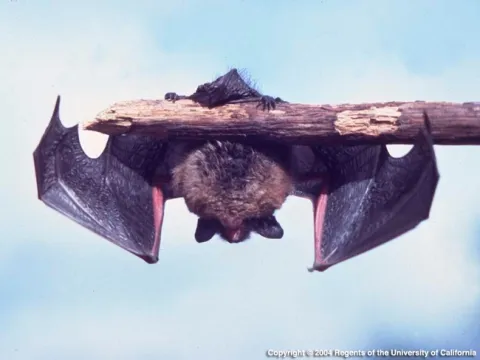
Bats are flying mammals from the order Chiroptera (meaning hand-winged). Bats are the only mammal capable of true flight. There are 25 species of bats in California and it is estimated there are around 13 species found in Humboldt and Del Norte counties. Depending on their species, they can live five to thirty years. The little brown bat generally lives 30 years with the female giving birth to 1 pup per year. The females form colonies in the spring to give birth and raise their pups. Bat populations are threatened by the White Nose Syndrome. This highly contagious disease is the culprit for the declining population, leaving many species threatened or endangered.
A few years back my niece was bitten by a bat when entering an outbuilding. Although only a small percentage of bats carry rabies, she could not chance the unknown and received the series of treatments. Once symptoms appear the disease is most always fatal. Rabies exposure is from the saliva of an infected mammal through an open wound, abrasion, eyes, nose or mouth. Bats carry various diseases to humans and other mammals. We can minimize the risks by not handling bats, not breathing their droppings, and most importantly vaccinating our dogs and cats for rabies. Bats also create unsanitary conditions where they roost. Their droppings (guano) and urine attract insects and creates odors.
In most cases bats do not create problems, in fact they are beneficial predators and pollinators for our farms and gardens. Being nocturnal, they play an important part in our ecosystem consuming large quantities of night flying insects in our landscapes, gardens and farmlands. Bats are an excellent vector control for mosquitoes. Bat houses are often found in gardens and on farms to encourage bat populations.
Finding a bat on the ground or out in the open does not mean it is sick. It might be tired and resting. It is best to let it lay if it is in an area that isn't harming anyone. If it is an area that children or pets might find it, gently scoop it into an open box while wearing leather gloves and place the box where no one can encounter it. If it has been in contact with other animals or people, contact the county health department for testing.
The University of California IPM Publication 74150 is a great resource to obtain additional information. View Publication

